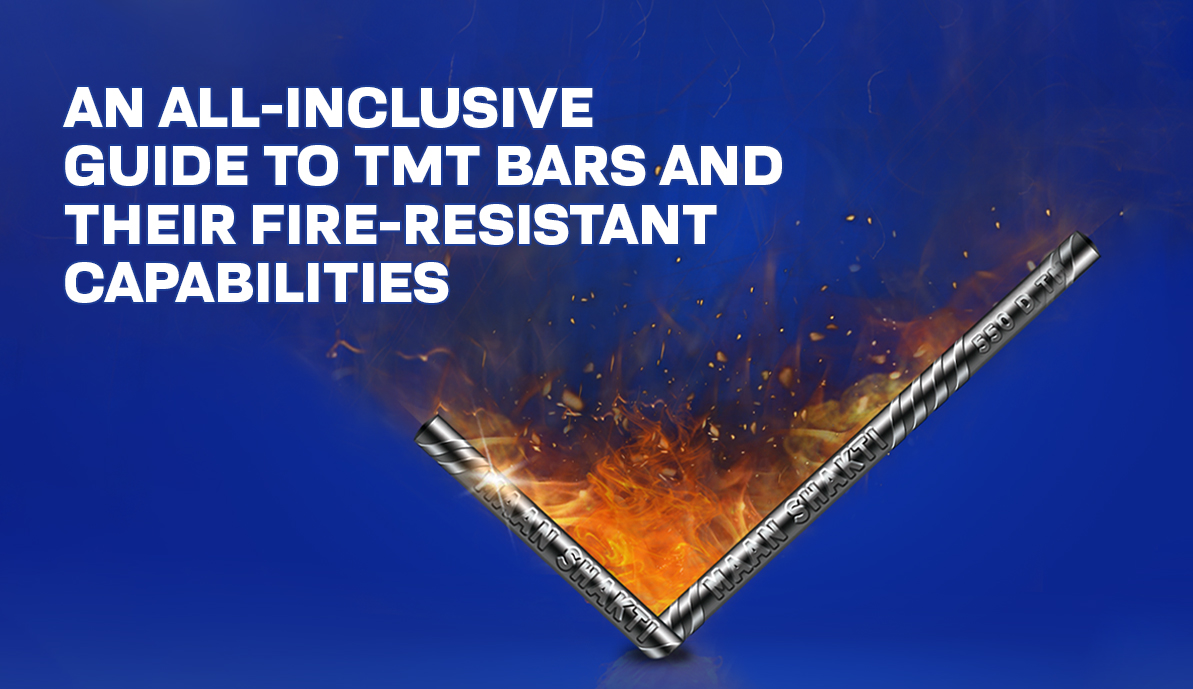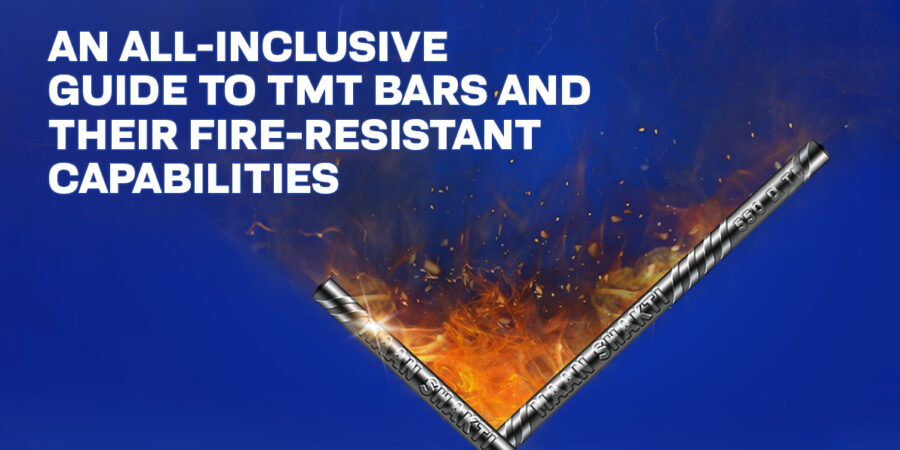Construction sites involve hot welding tools and flammable materials or liquids that may cause accidents. The site management team must keep control over the fuel sources and ignition. Ignition sources may come from different places on the construction site. If the ignition source finds a way near the fuel source, it may result in fire accidents.
Damage due to fire is a crucial aspect that may result in the deterioration of reinforced concrete structures. Notably, concrete is indeed a non-combustible material. However, the physical, mechanical, and chemical characteristics may degrade when exposed to an excessively high temperature. That’s where TMT bars give peace of mind.
Even if a certain portion catches fire due to ignition or other fuel sources, thermo mechanically treated bars make them fire-resistant. That means they can withstand temperatures ranging between 450 degrees to 600 degrees Celsius. So, if a building made with TMT bars catches fire, it can withstand the disaster from 600°C to 650°C.
So, in a construction industry where safety holds paramount importance, TMT bars’ fire-resistant capability makes the job easier. But do you know what makes these bars fire-resistant? On that note, let’s narrate more points in this post.
Before you consult a wholesale distributor for thermo mechanical treated steel bars, let’s find out why these bars are fire-resistant.
Understanding the Importance of Fire Resistance
Fire resistance is a significant concern when it comes to construction projects. It ensures the safety of the workers while maintaining the building’s structural integrity during a fire accident. They can withstand excessively high temperatures without losing their ductility and strength while maintaining structural stability. So, they are used as reinforcement in the concrete structures.
During any fire accident, the concrete may crack because of high temperatures. However, the TMT bars won’t get exposed to heat up to a certain temperature. The fire-resistant qualities of these bars help prevent dangerous scenarios while ensuring the reinforced concrete structure remains stable. As a result, it offers people the required time for evacuation and to cope with the fire-damaging impacts and evacuate.
TMT Bars – How Are They Fire Resistant?
Since TMT bars possess excellent tensile ductility and strength, they are essential for construction projects. You can find TMT bars in various grades. These bars undergo a mechanical treatment involving heating, quenching, and tempering.
As a result, they gain excellent mechanical properties. So, they are a better choice when compared to conventional steel bars. Now, which elements make these bars fire-resistant? Let’s find out your answer from the given points:
Role of Alloy
The alloy composition of TMT bars plays a significant role in fire resistance. The bars are made of carbon steel. The right amount of carbon can improve their strength and durability. The precise balance of carbon content in TMT bars ensures optimal performance during fire conditions.
Besides carbon, TMT bars alloying elements are also responsible for making them fire-resistant. TMT bars are manufactured using some micro-alloying elements like boron, vanadium, niobium, zirconium, molybdenum, lanthanum, and cerium. When these elements undergo a mechanical treatment, they strengthen the bars to withstand fire.
The Thermomechanical Treatment
The composition of micro-alloying elements is responsible for acquiring fire-resistant qualities in TMT bars. However, thermo-mechanical treatment also plays a crucial role in making fire-resistant bars.
The steel is heated during the thermo-mechanical treatment process. The process refines the steel’s grain structure and improves the overall mechanical properties.
It becomes less susceptible to degradation during natural disasters like fire accidents. The rolling and stretching process further improves the microstructure. As a result, it forms a finer grain size with increased dislocation density.
Note that the tempering process also improves toughness and ductility in TMT bars. What it does is release internal stresses during tempering. On the other hand, in the quenching method, the TMT bars are cooled.
The cooling phase results in a hardened surface. The surface serves as the protective layer against heat. As a result, these bars are protected from damage from fire accidents. That’s how TMT bars acquire strength to retain structural integrity during fire incidents.
Pearlite and Ferrite Microstructures
TMT bars come with a strong outer cover and a softer ferrite core. This is the microstructure of these bars. Ferrite in the softer core is a soft and ductile microstructural phase. It is quite similar to pure iron.
There’s a particular amount of carbon fitted in the gaps. On the other hand, the hard phase is made of pearlite.
The phases are arranged in a banded form. While ferrite forms bands, pearlite forms regions between these bands. Both these phases make the bar strong and ductile.
So, the microstructure can withstand deformation and thermal stress during fire incidents. As a result, it can preserve the building’s structural integrity during fires from 600 °C to 650°C.
A Concluding Note
Damage due to fire might be a crucial aspect that may deteriorate the reinforced concrete structures. So, for the above reasons, TMT bars are fire-resistant. Fire damage may disturb the stability and durability of your building structure. The mechanical treatment of these bars makes them resistant to fire.
The soft core and hard exterior make them weldable and flexible. So, they are prone to seismic activities and natural calamities like fire, earthquake, etc. These bars can withstand temperatures between 450 and 600-650 degrees Celsius. Since fire is a destructive natural disaster that may cause the worst damage, safety becomes crucial for builders and engineers.
Now that you understand everything about TMT bars and their fire-resistant qualities, it’s time to find a reliable TMT wholesale distributor in West Bengal for your next construction project.


